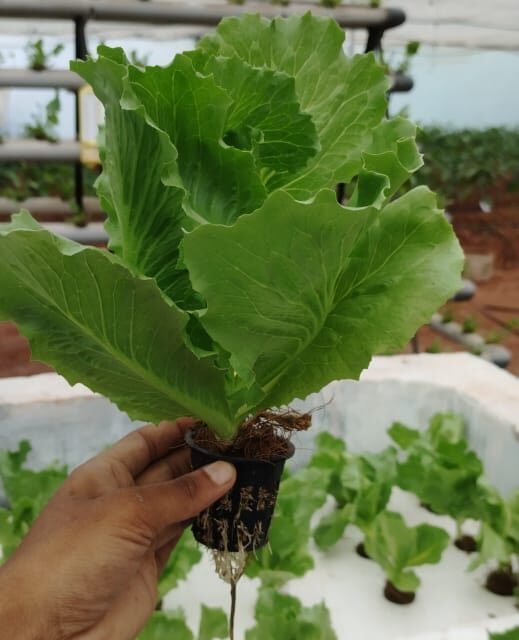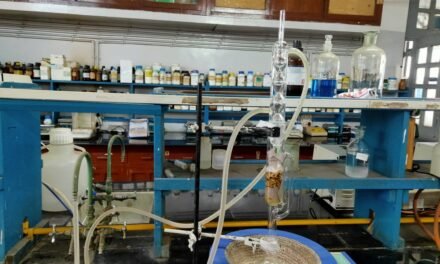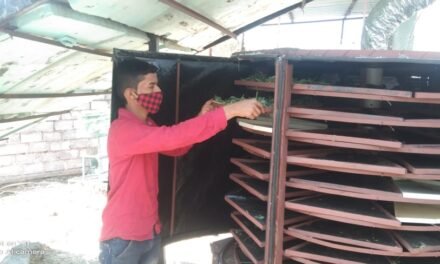Introduction
This is my first main project that was give to me by vigyan ashram.
I got the project of Deep water concept of hydroponics. Then Pranit is all ready working on this project the he explained me about the project.
4/09/2024
Hydroponics : Hydroponics is a method of growing plants using nutrient-rich water rather than soil
There various type system of hydroponics :
- Nutrient Film Technique (NFT)
- Deep Water Culture (DWC)
- Flood and Drain
- Drip irrigation
- Aeroponics
- Vertical Hydroponics
In vigyan Ashram has two systems :
1.Nutrient Film Technique(NFT)
2.Deep Water Culture( DWC)
Nutrient Film Technique : Nutrient film technique (NFT) is a hydroponic technique where in a very shallow stream of water containing all the dissolved nutrients required for plant growth is re-circulated past the bare roots of plants in a watertight gully, also known as channels.
Deep Water Culture : In a deep water culture method, also known as the raft method or floating system, the nutrient-rich water is circulated through long canals at a depth of about 20 cm while rafts (usually polystyrene) float on top. Plants are supported within holes in the rafts by net pots.
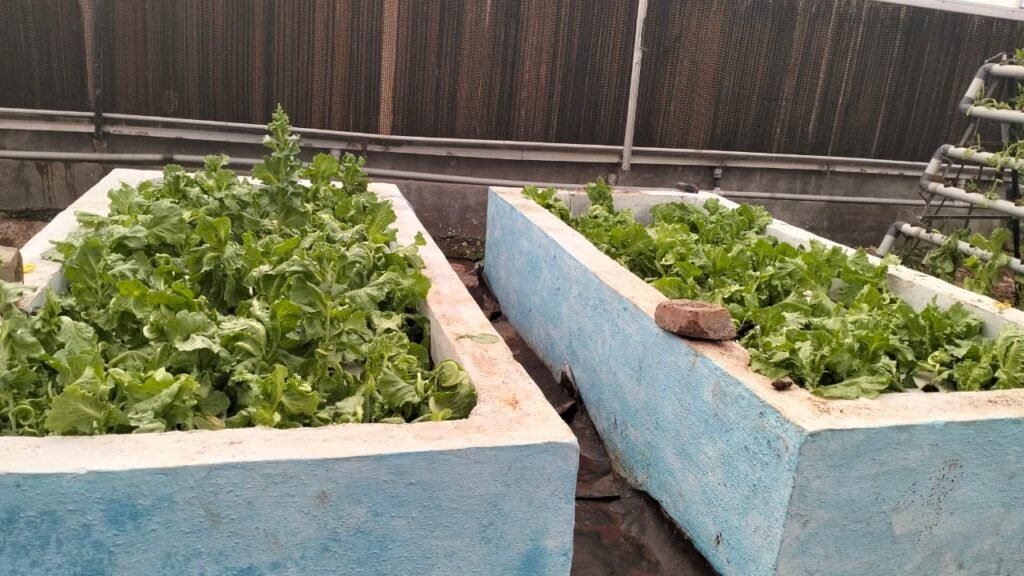
14/09/2024
I took information about hydroponics system on this date.
What is hydroponics ?
Hydroponics is a branch of agriculture where plants are grown without the soil .The nutrients that the plants normally derive from the soil are simply dissolve into water instead.
Why use a hydroponic system ?
hydroponics garden produce the healthiest crop with high yields and are consistently reliable. hydroponically grown plants do not come in the contact with soil born pests and disease thus saves costs of soil preparation ,insecticides , fungicides.
Needs for hydroponics :
Plants , container, nutrients, light source.
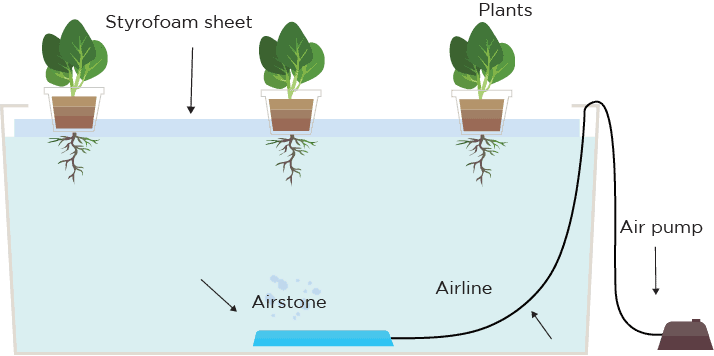
Zero dependency on weather conditions:
Crops are growth under controlled climatic conditions inside the polyhouse use.
Can provide optimum growing condition required for specific crop for maximum yeild
How long does lettuce last ?
Hydroponics lettuce can last two to four weeks if the roots are intact when its harvested.
Scopes of hydroponics :
15/09/2024
On this date, Dixit sir and I will discuss how much oxygen level is required for the growth of the roots of those plants. Then Dixit sir asked me how to check the oxygen level.
After that, I have to information about how to check the oxygen levels:
Dissolved oxygen sensors are employed to monitor the levels of oxygen in hydroponic systems continuously.
Then Mahesh sir asked to calculate how much water is in the tank.
First I calculated the volume of the tank.
Length :306
Breadth:119
height:42
Volume : length * Breadth*Height
306*119*42 = 1529
16/09/2024
ROOT GROWTH ANALYSIS OF LATTUCE IN DWC TANK :
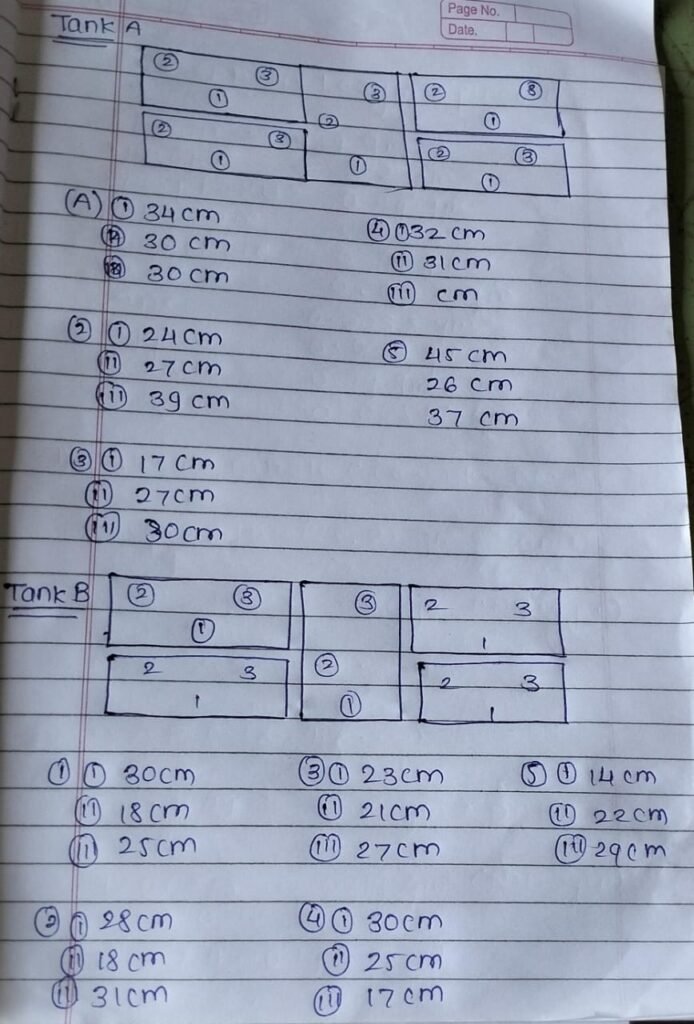
After taking the measurements, the average of all the values was calculated
Tank A : Average = 30cm
Tank B: Average= 23.86cm
Ranjit sir asked me to mark the measured roots to see the growth of after 8 days
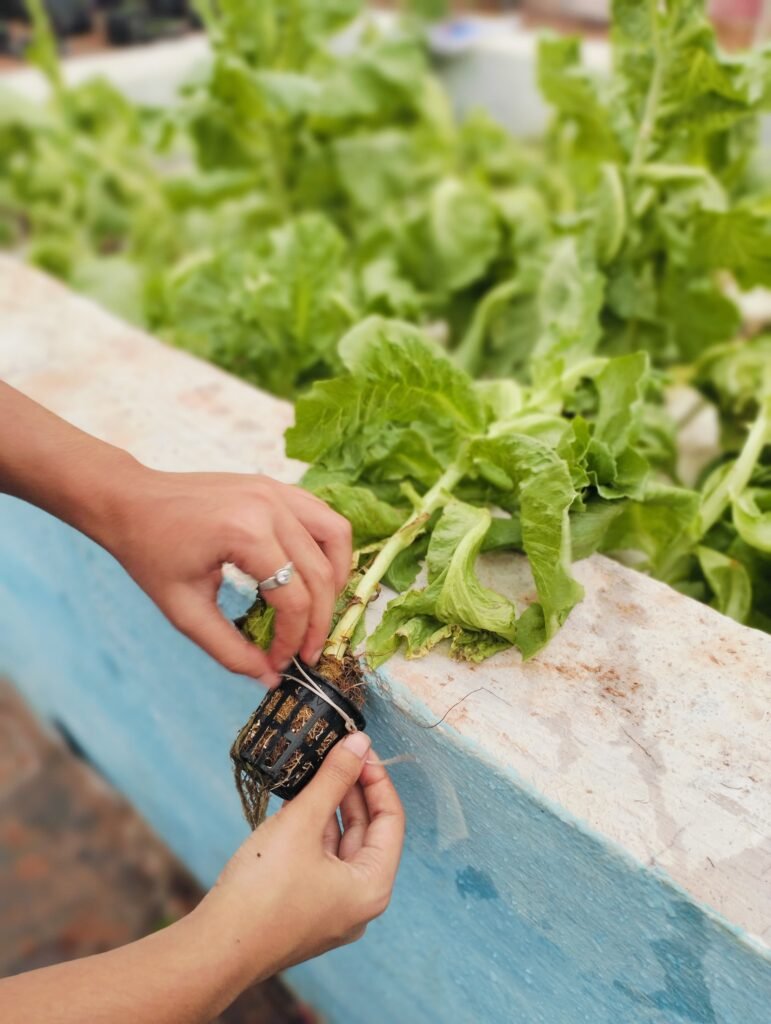
17/09/2024
To maintain the aeration within tanks, we connected pipes to circulate the water from tank A to B and B to A simultaneously, bubbler was also submerged in tanks to increase aeration and maintain oxyge
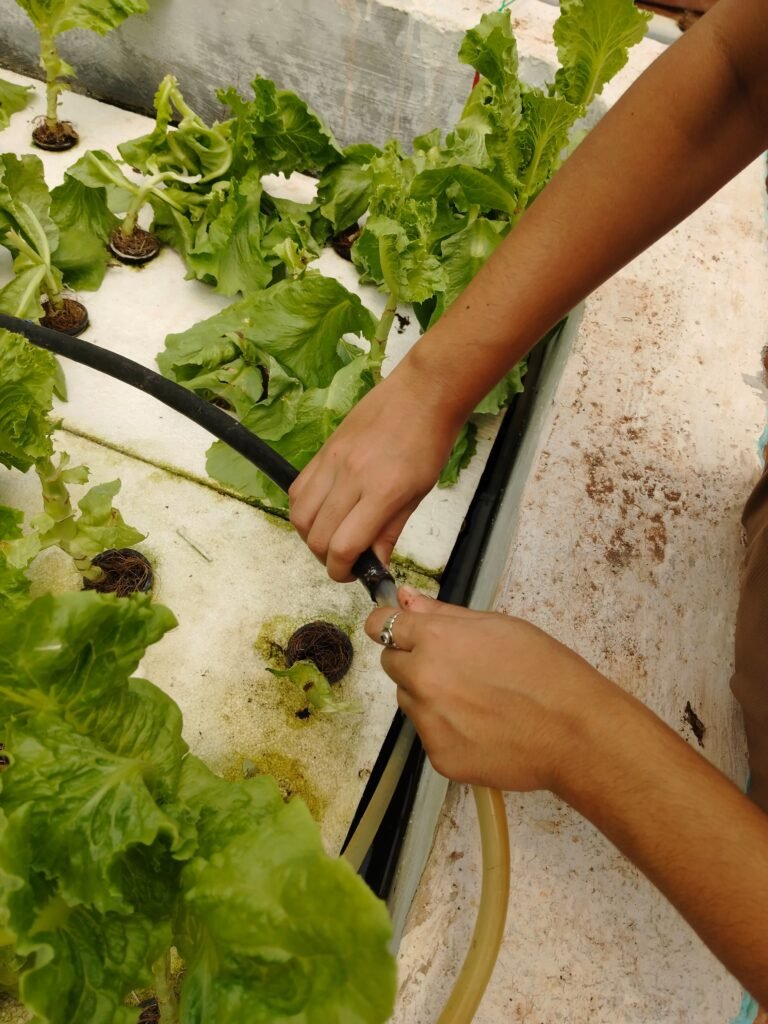
Cleaned water tank of NFT system and covered with black polythene sheet to avoid formation of algae on water surface as it takes nutrients in water which will further affect the EC, pH and overall growth.
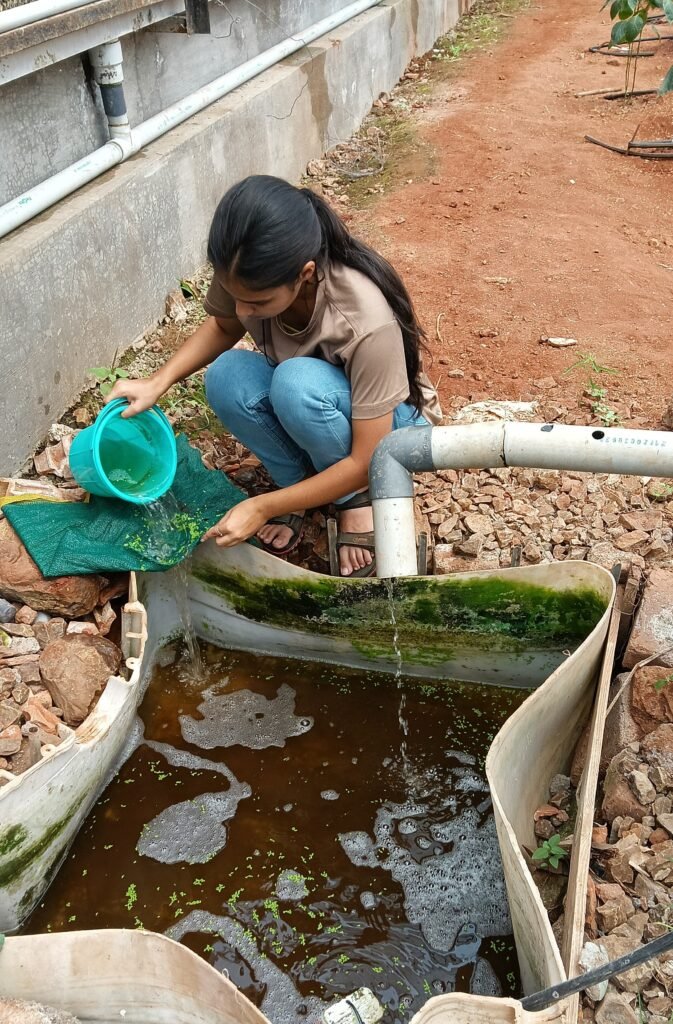
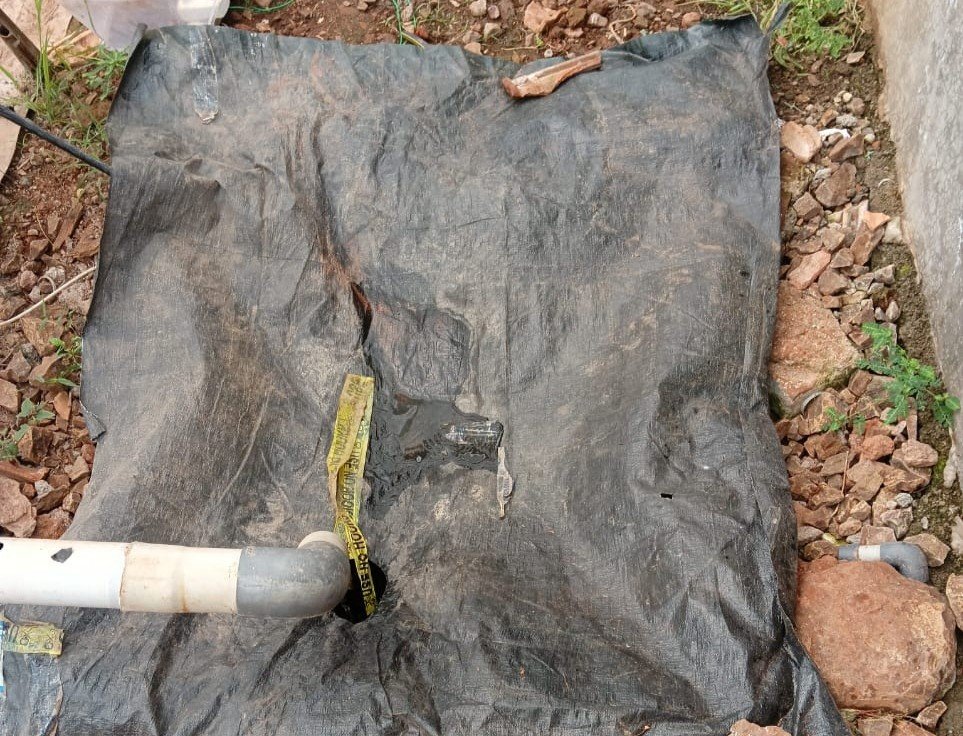
18/09/2024
Electric Conductivity (EC) : In hydroponics, electric conductivity is measure of conductance/conductivity within your hydroponics nutrient solution.
EC- (i) Tells number of available nutrients in solutions
(ii) Determine how much food your plants receive, and how well they can absorb it.
PH :pH is a scale of measurement to detect the acidity or alkalinity of a solution. It is important in hydroponics because pH affects the availability of nutrients to plants. Plants have optimal pH ranges where they effectively absorb nutrients. pH levels outside this range are detrimental to the plant.
For optimal growth, hydroponic lettuce should be grown at a pH between 5.5 and 6.0, with 5.8 being the ideal value.
Determined the EC and pH of Tank A and Tank B in DWC system (Lettuce) with the help of digital EC and pH meter
Tank A –
Water temperature -26°C
EC-2116
Digital pH meter-6.45
pH meter-9.21
Tank B-
EC-2226
Digital pH meter – 6.65
pH meter -9.78
(Note :Above EC and pH reading are not accurate as digital EC and pH meter was not calliberated .
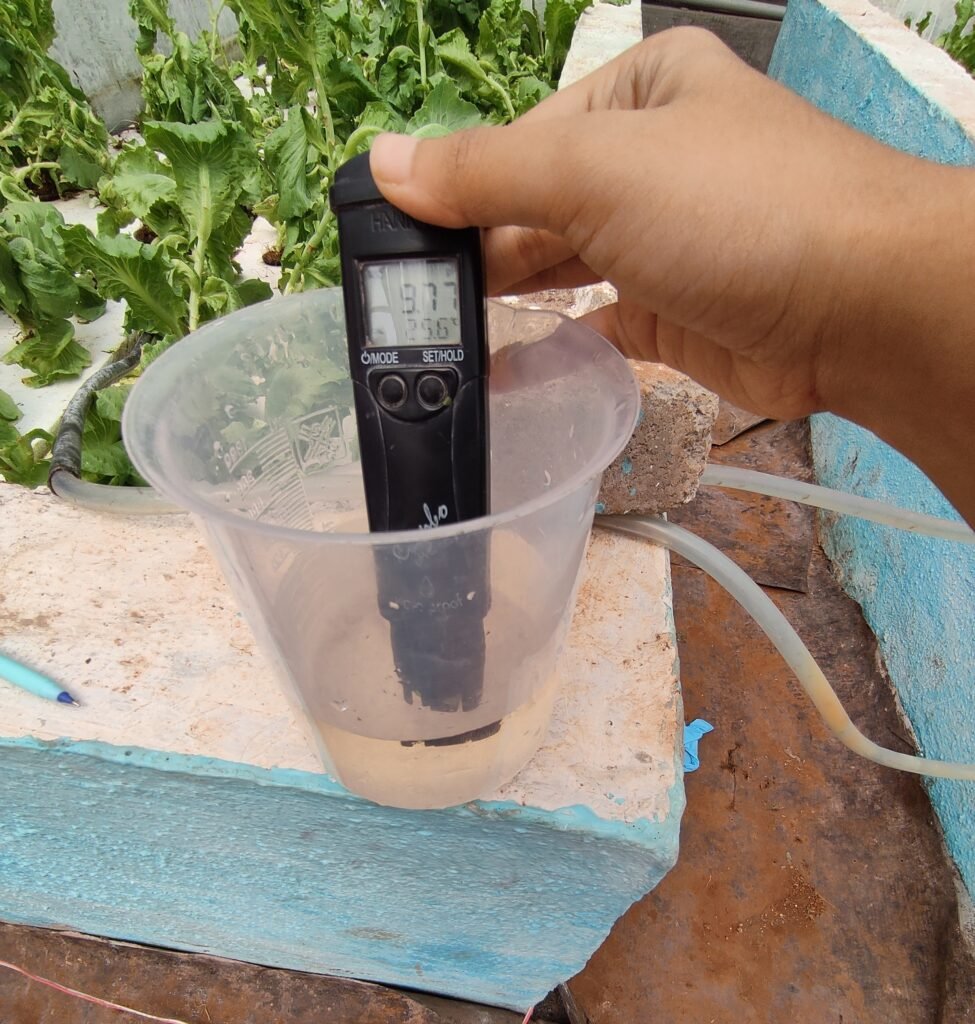
21/09/2024 -24/09/24
On this date, over growth of lettuce plants of tank A were seen, then Pranit and I cut the leaves of those plants .
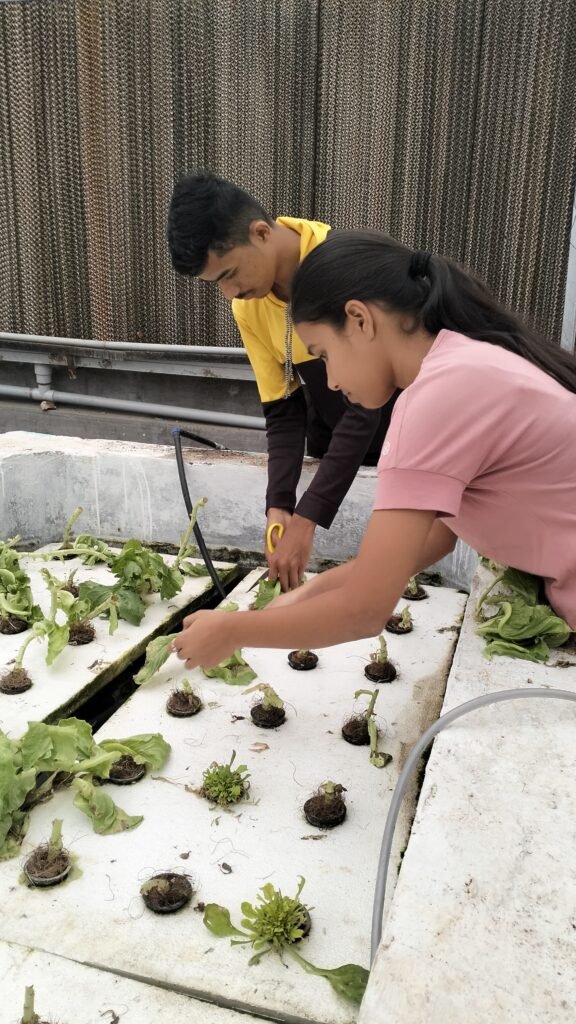
After harvesting lettuce leaves we observed the growth of roots. Then it was analyzed whether new roots come to that stem or not.
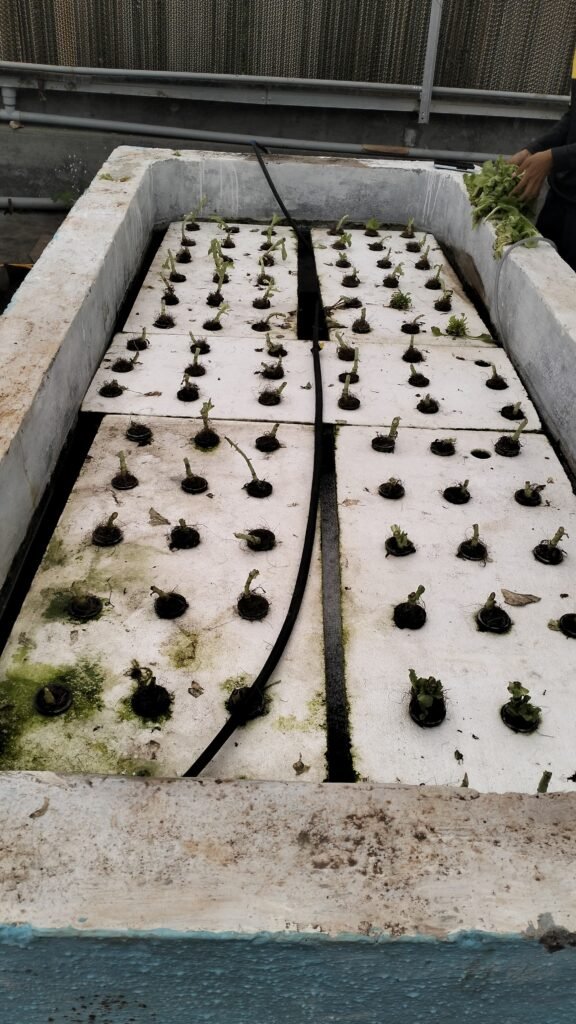
After 2 days we made an analysis it was found that the root growth of 95% stems were rotted. The remaining 5% stems got new leaves grown on them hence it was concluded that the root growth of that stems was happening.
These photos are of the growth of new leaves on stem and their roots:
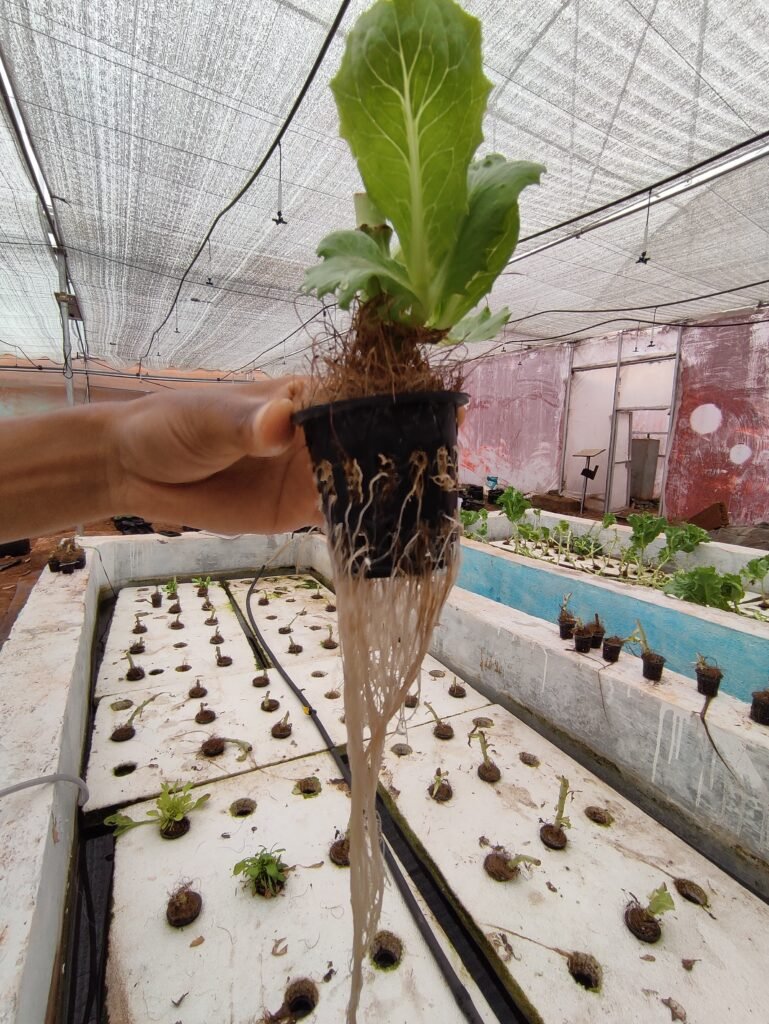
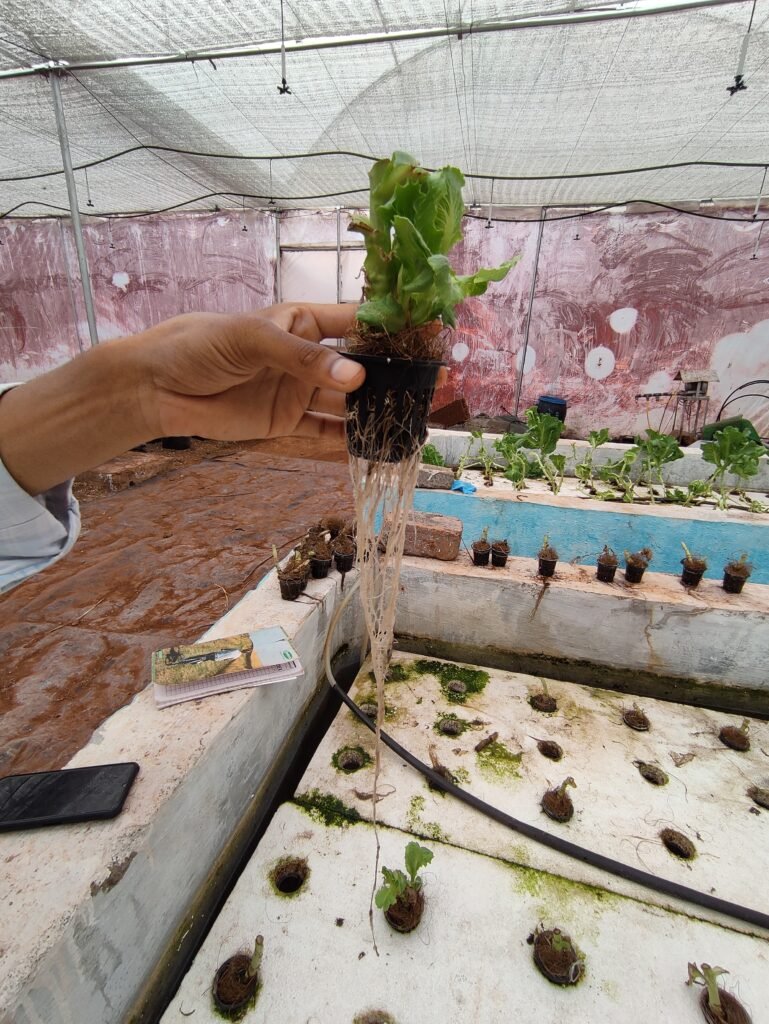
These photos are roots growth of rotten stem’s :
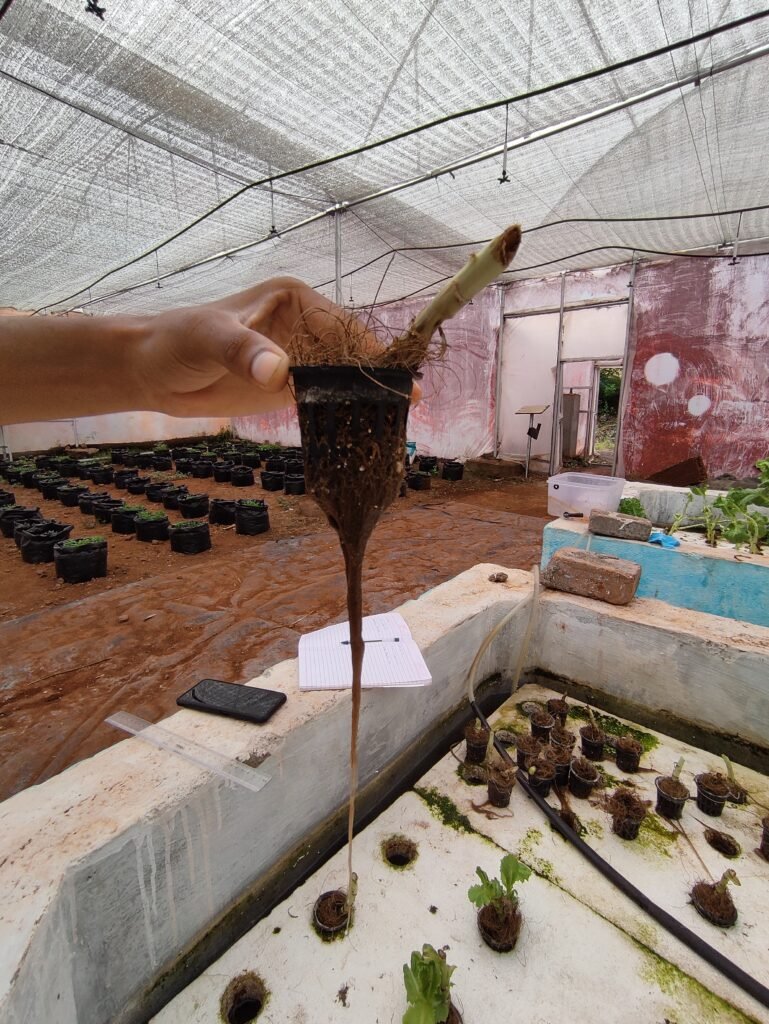
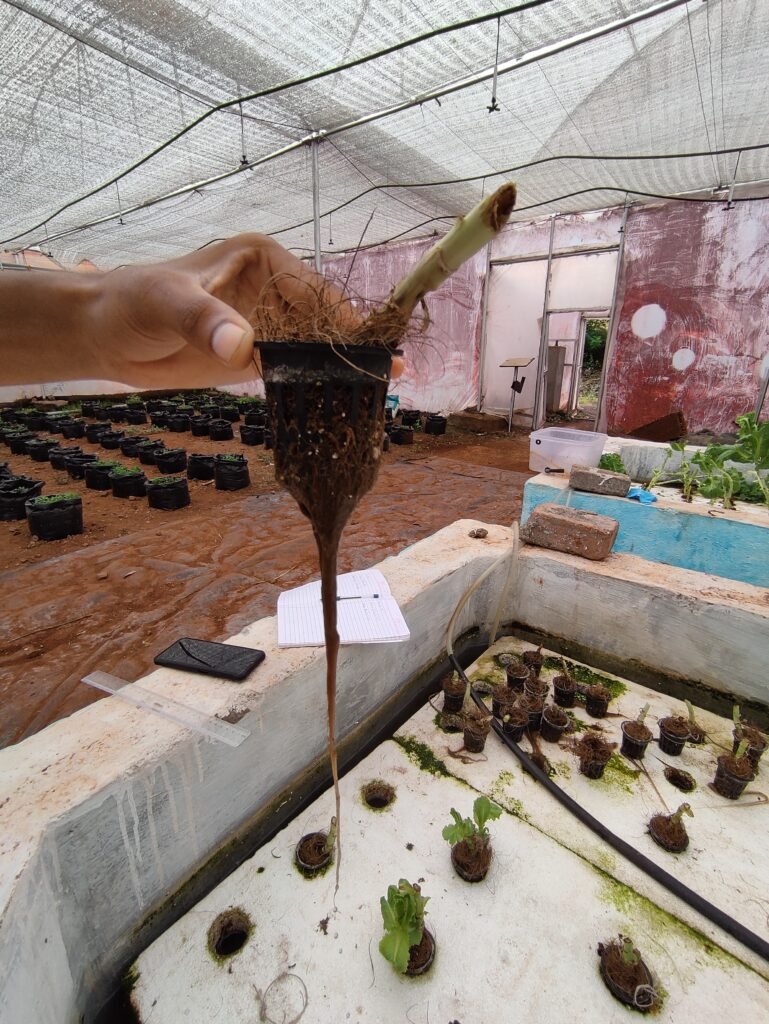
25/09/24
On this date,Due to the overgrowth of the plants in tank B and the life of the plants ended, the leaves of those plants were infected with worms and bacterial infection.
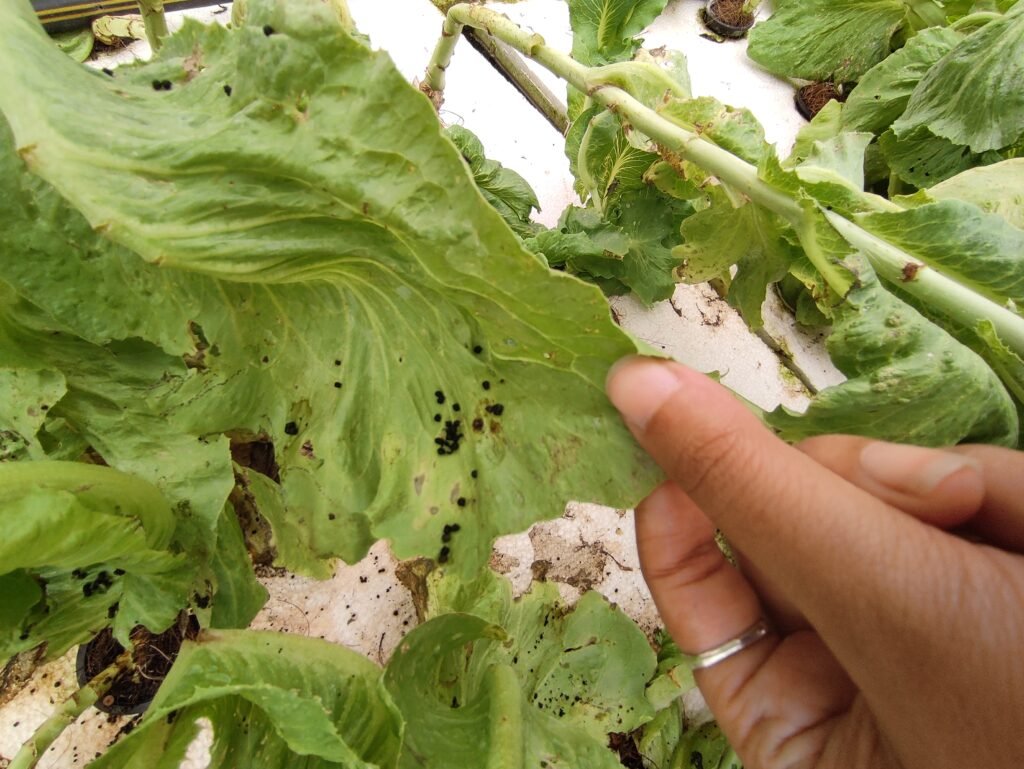
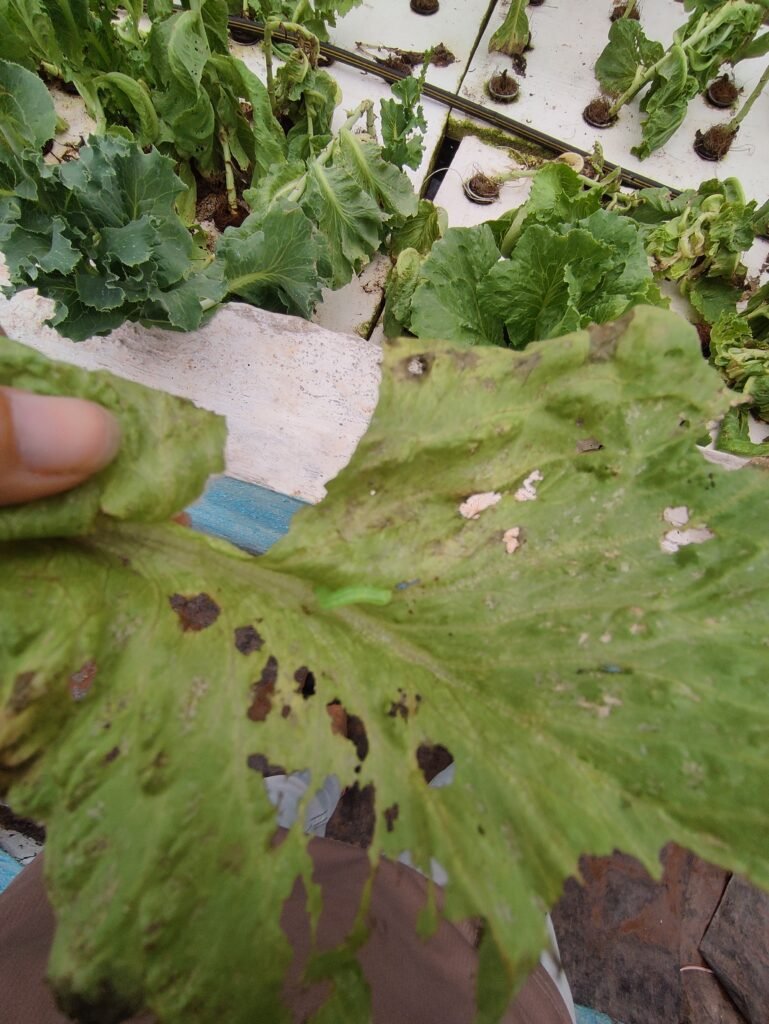
Then the leaves of those plants were removed from tank B.
28/09/24
On this date, Dixit sir asked me to find out how oxygen level in water can be measured by titration ,then i took the information and found out that dissolve oxygen measured by Winkler method.
WINKLER METHOD : The Winkler method is a widely used laboratory technique for measuring dissolved oxygen (OD) in water. Here’s
Winkler Method Formula :
DO (mg/L) =[(A-B)*N*8000]/v
Variables :Variables:*A = Volume of Na2S2O3 (thiosulfate) titrant used (mL)
B =Volume of Na2S2O3 used for blank (mL)
N = Normality of Na2S2O3 (typically 0.025 N)
V = Volume of water sample (mL)
*Step-by-Step Calculation:*1. Collect water sample (V) and add:
– 1 mL MnSO4 (manganesulfate)
– 1 mL KI (potassium iodide)
– 1 mL NaOH (sodium hydroxide)
2. Mix well and allow precipitation.
3. Add Na2S203 (thiosulfate )titrant until color disappears.
4. Record volume of Na2S2O3 used (A).
5. Repeat steps 1-4 for blank sample (no water).
6. Record volume of Na2S2O3 used for blank (B).
7. Calculate DO using formula above.
2 /10/24
On this date Pranit and me removed the sheets from the tank and the stems from the cups and separated the coco fibre from them and cleaned them as they were to be used for the plantation.
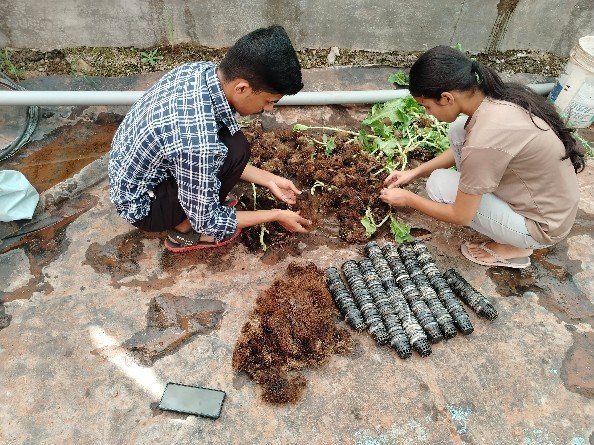
10 /10 /24 to 16/10/24
On this date, new plants of lettuce were brought, then we cleaned the water in the tank and did set up of new plantation on DWC system .Then measure water in both tanks before planting lettuce in DWC system After filling the tank with water, Then in tank a we put the t joint to the motor, Then measure the EC and Ph of that water.
Tank A :
1650 litter water filled in Tank A
EC:621
PH:10.55
Tank B:
1580 liter water filled in Tank B
EC:618
While planting , me and Pranit calculated dosing of 25% nutrients . We started dosing nutrients from 25%, then after 3 days 25% nutrients were added and next day 50% of nutrients were added to the water tank, likewise 100% dosing was completed. Then after two days we maintained the ph of water by adding the Phosphoric Acid to the water tank.

Next we will analyze the weight gain by plants in each week.
Nutrients required for dosing are as follows:
Urea
13:00:45 (Nitrogen ,Phosphorus ,Potassium )
00:52:34 (Mono Potassium Phosphate)
MgSO4
Calcium ,Nitrate
Ferrous
Micronutrients
Transplanted lettuce saplings from cocopeat to cup containing coco coir media which will provide a support to a sapling and inserted in thermacol sheets.
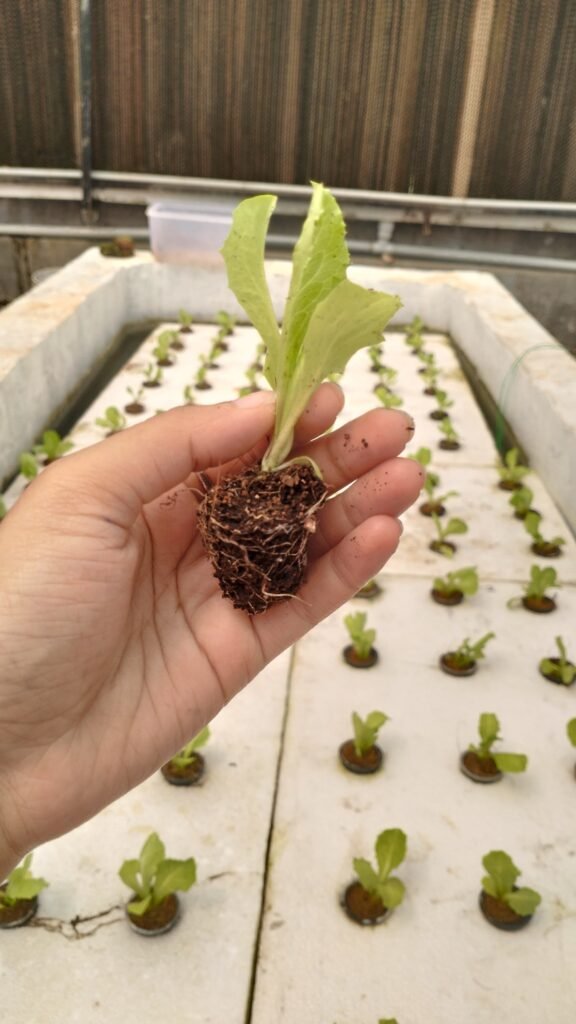
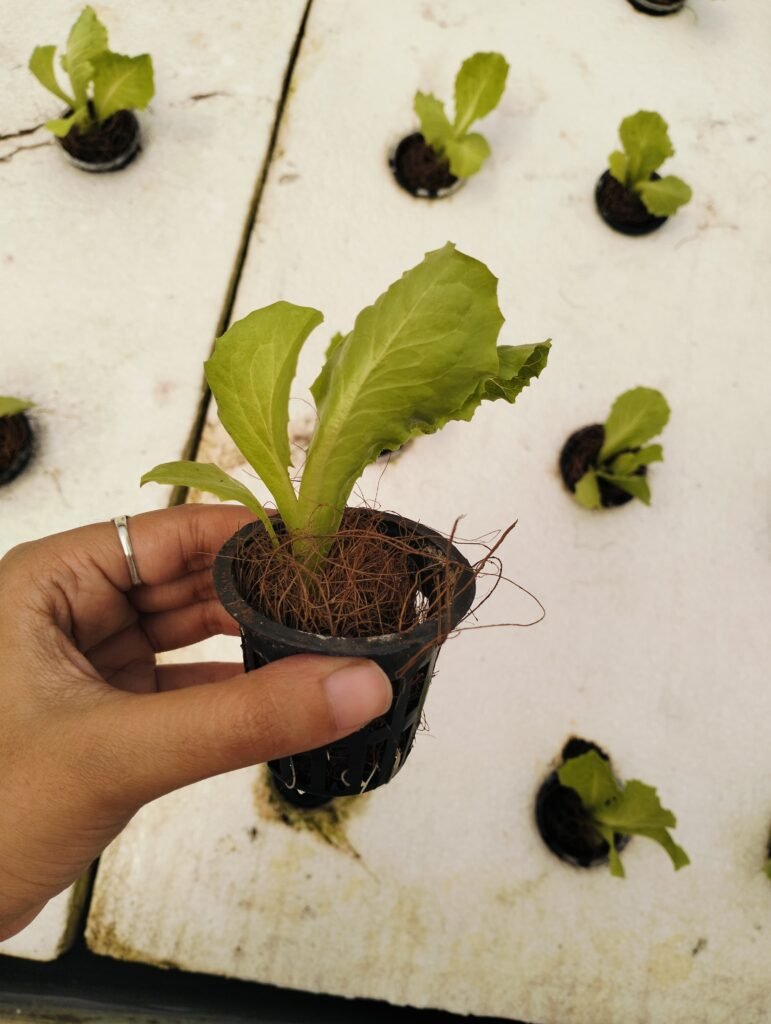
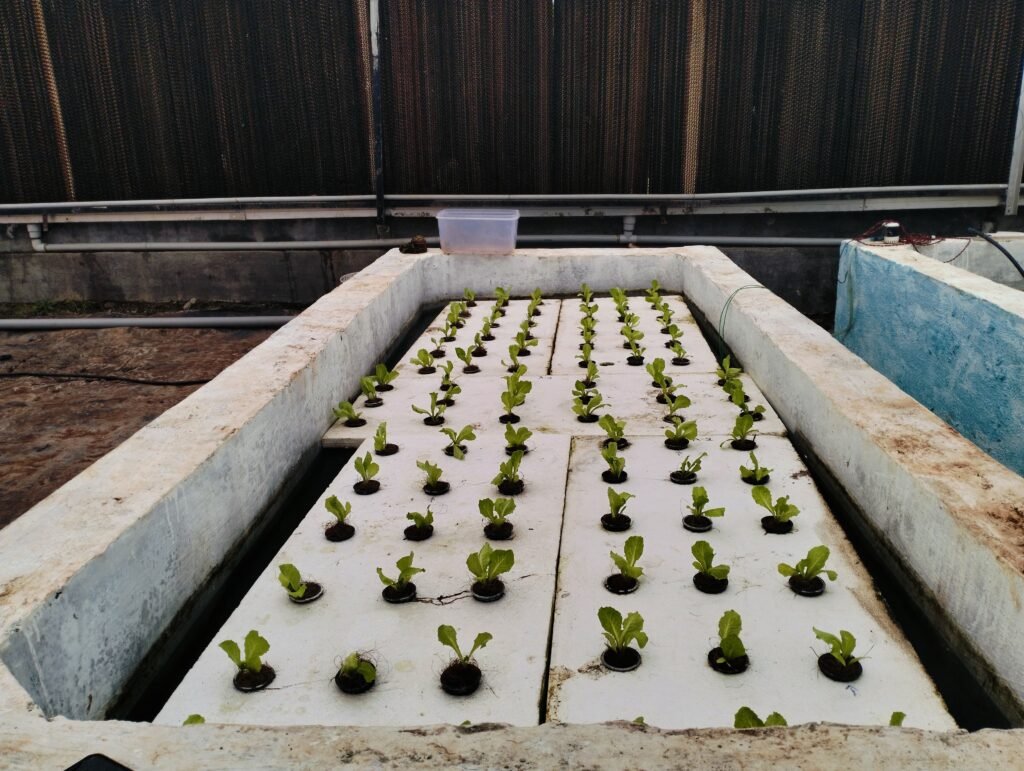
Next we will analyze the weight gain by plants in each week.
| Tank A | Tank B | |
| Before adding the nutrients in water (10/10/24) | EC:621 PH:10.66 | EC:618 PH:10.84 |
| After adding 25% nutrients in water (11/10/24) | EC:884 PH:10.48 | EC:895 PH:10.60 |
| (12/10/24) | EC:888 PH:10.72 | EC:883 PH:10.74 |
| Add Phospheric Acid To Maintain PH (13/10/2) | EC:896 PH:6.41 | EC:870 PH:6.48 |
| (14/10/24) | EC:875 PH:6.52 | EC:866 pH:6.76 |
| Add 25% nutrients in water tank (15/10/24) | EC:1156 PH :6.59 | EC:1124 PH:6.84 |
| Again add 50% nutrients in water tank(16/10/24) | EC: PH: | EC: PH: |

